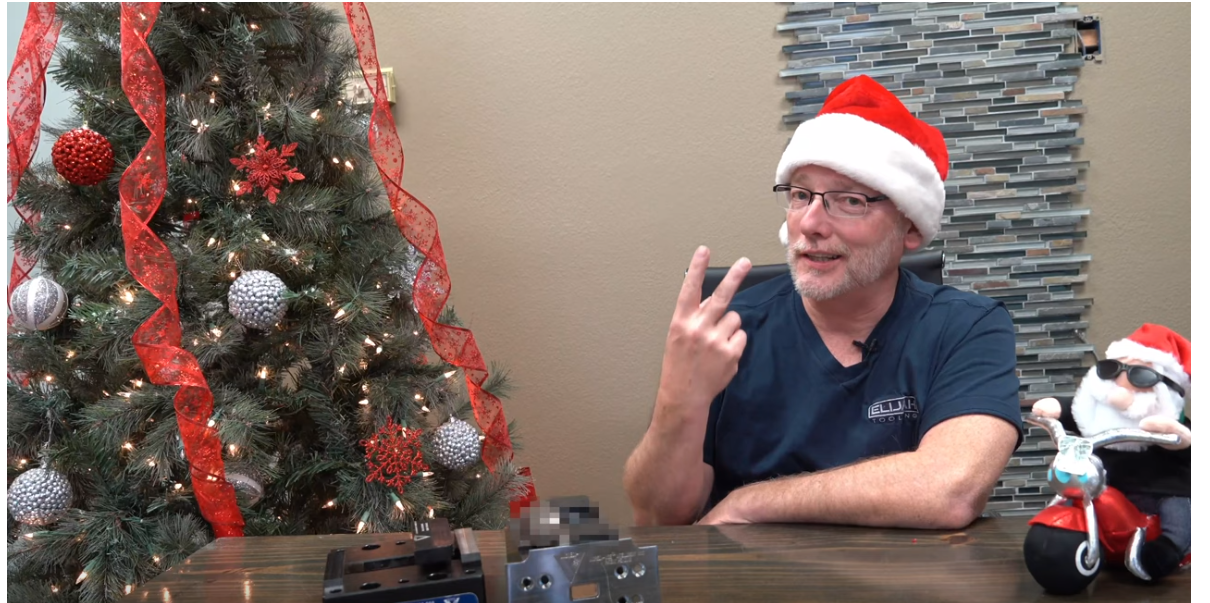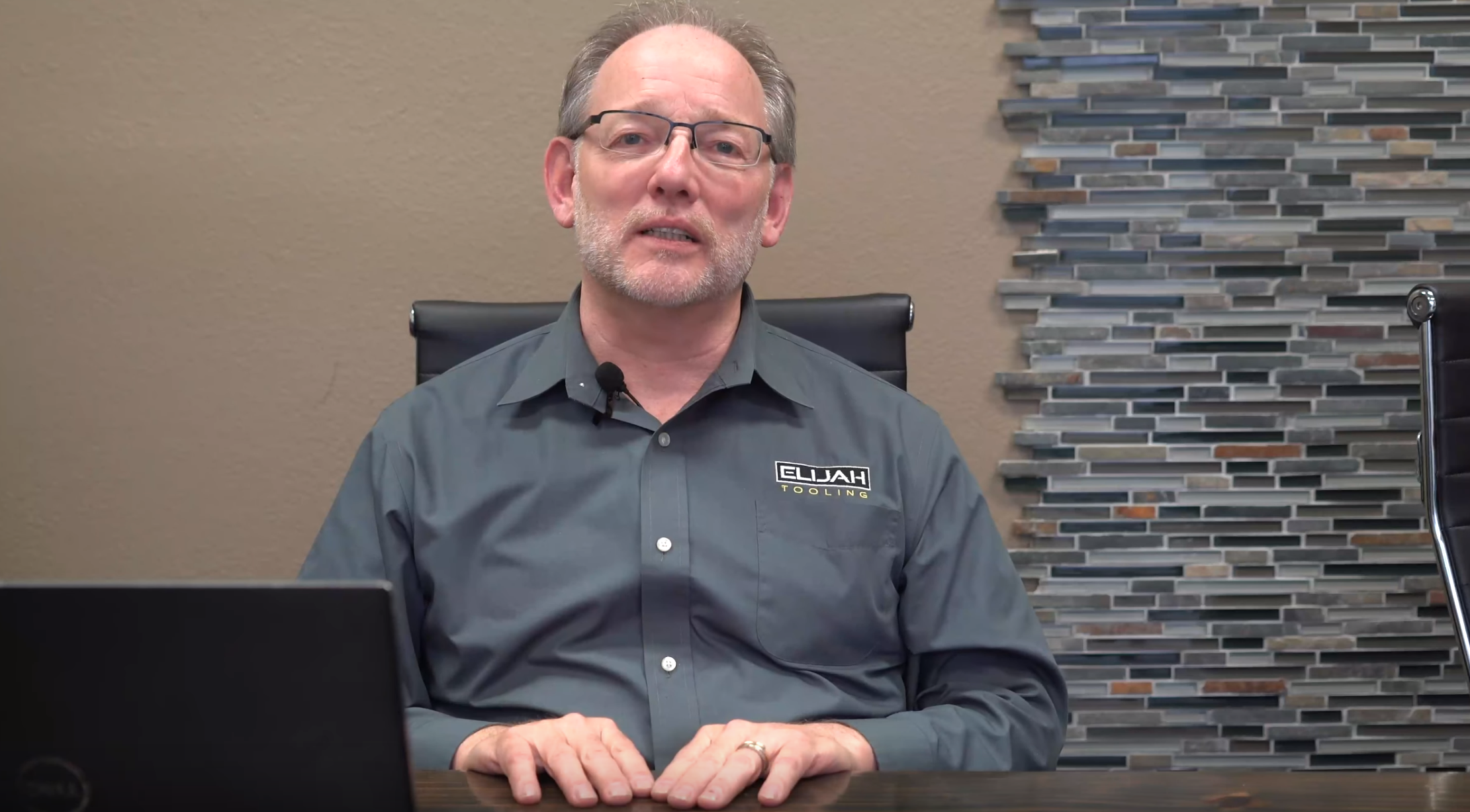(Transcript)
Hey guys it's Rick here from Elijah Tooling.
I wanted to introduce you to a friend of mine. This is our friendly neighborhood vacuum cleaner. We call him Spot.
So, interestingly enough, he talks and everything. But, the reason I brought him with me today is I wanted to talk about this little guy. I like him a lot. He is a really good friend of mine. But you know what, he can only do about half of our house. If he goes beyond that half, he starts getting lost. He starts having trouble.
So, as much as I like Mr. Spot, he has his downfalls. What I wanted to do with Mr. Spot is I wanted to segue into why our Modular Fixture Plates make a lot of sense. Now, you may say "What is he talking about?"
Well, you know what, Spot gets lost. Our Modular Fixture Plate makes it possible for your operators not to be lost. You have got row column designators on those plates that allow them to know exactly where they are at any given time and, to precisely locate whatever it is exactly where you want it to be.
So, today I am going to take just a bit of your time and we are going to talk about how we go about quoting these plates, the kind of questions we are going to ask you and the kind of information we are going to need so that we can get you what you are going to be able to use.
Okay so let me tell you about this Modular Fixture Plate. No! I don't think so! I think we will have to go to the plastic Modular Fixture Plate!
We are going to go with something that I can actually lift! So, here is a Modular Fixture Plate. It is made of plastic. Some of the things that we are going to ask you when we are quoting one of these is, of course, we need to know how big it is. What is it's length? What is it's width? But, we would also like to have some idea of how thick this Modular Fixture Plate is. Our typical Modular Fixture Plate is somewhere around 1.9 inches, but you may want a thicker plate.
Another question we are going to ask is what kind of metal do you want? Do you want a soft metal like aluminum? Do you want a hard metal like steel? It makes all the difference in the world because it matters what hardware we are going to put into the Modular Fixture Plate. So, if it is an aluminum Modular Fixture Plate, a soft Modular Fixture Plate, then we are going to be wanting to use hardened Zipbushing™ Precision Threaded Locator Bushings at the multi-purpose hole locations. But, if it is a steel Modular Fixture Plate, we don't need the hardened Zipbushing™ Precision Threaded Locator Bushings, we can just use the bored, threaded hole and you can get the same benefit from it.
Another question that we are going to talk about and one of the things that we have to discover when we are talking about this plate is how are you going to locate the Modular Fixture Plate? In other words, we are talking about the back side of the Modular Fixture Plate. How are we going to locate it, and are we locating it on a T-Slot Fixture, or a tombstone, or something like that?
So, typically, you are going to have some kind of location. In this case, this particular Modular Fixture Plate has round pin locators. Here we have our Xzertz™ Retractable Locating Dowel Pin to locate it. But, we are also going to need a way to connect the Modular Fixture Plate to, in this case, a tombstone. So, you can see that ours is a little bit unique because we have take-up holes for our Invert-A-Bolt™ Fasteners and Accessories.
Now, in a similar way, if you are going to a T slot fixture, then you might use one of these, an Invert-A-Bolt™ Quarter-Turn T-Slot fastener. And it is going to be in your slot. This is your slot and this is your locating pin. So, we need to know these kinds of things. Are we going in a slotted fixture or are we going into something else?
Of course, we are going to have to find out what kind of Invert-A-Bolt™ Fasteners and Accessories you are going to use. Are you going to use a 3/8", a 5/8" or a 1/2"? We have to know that.
Where we started was how do we know where everything is at on this fixture? Well, we use the row-column designators. That is kind of a standard feature. But, sometimes we will have them going across the Modular Fixture Plate in different locations and so, we will want to know that.
What else? Of course, we need to know what size? So typically, what you are going to have is the size of the Invert-A-Bolt™ Fasteners and Accessories match the size of the multi-purpose hole. So is it 1/2", 5/8"?
Those are kind of some of the things that a guy has to know to be able to accurately quote.
The pattern itself is something that we also have to know. This is a pretty dense pattern. You can see that it is 2 inches from Invert-A-Bolt™ Fasteners and Accessories to Invert-A-Bolt™ Fasteners and Accessories but 1 inch from multi-purpose hole to Invert-A-Bolt™ Fasteners and Accessories. So, we can have a Modular Fixture Plate that spreads that out a lot, so you have less hardware, or we can have a Modular Fixture Plate that moves that in closer and you have more hardware and a more expensive Modular Fixture Plate. That is just one of the trade-offs that we have to make when we are quoting a Modular Fixture Plate.
Your budget matters and we will try to get you there but, it all comes down to the pattern, the hardware that is going into the Modular Fixture Plate, the type of material that is in the Modular Fixture Plate and the preciseness of it.
Thank you for your time!
-Rick






Leave a comment
All comments are moderated before being published.
This site is protected by hCaptcha and the hCaptcha Privacy Policy and Terms of Service apply.